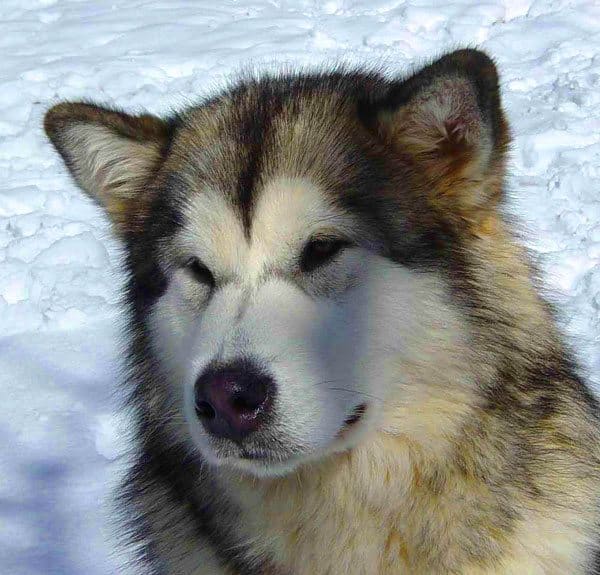
At least four thousand years ago, but very likely even earlier, the Eskimos crossed the Bering Straits when the tribes migrated East from the cold barren lands of Siberia. Arctic anthropology indicates the presence of Eskimo civilization at Cape Krusenstern as early as 1850 B.C.
Eskimo means “raw flesh eater” in the language of the Canadian Indians, the Eskimos referred to themselves as “Innuit” which means “the people.” Culturally they are quite different from the other races in the New World; their history is mysterious and much of this surrounds the dog. Thus its history and early development are largely conjectural.
Early life for the Eskimo consisted of nomadic travel in extremely rigorous conditions. Dogs and sleds were essential to their way of life and were their most prized possessions. Without them travel and hauling would have been impossible.
Archaeological evidence indicates that sled dogs may have first been used no more than three to five hundred years ago, although they may have been used for dog-drawn sleds or as pack dogs before that time. The dogs also hunted polar bear and other Arctic mammals for food. They are extremely hardy dogs and have adapted to the extremely low temperatures commonplace in Alaska.
One thing is certain – the innate quality of the dog we know as the Alaskan Malamute and its superb adaptation to its environment.
There are twenty native Alaskan languages, four are Eskimo. However, none were written down until the eighteenth century when Russian fur traders entered the country. The name Malamute applies to the regional dialect of the Alaskan Inupiaq Eskimos. The Malamute speaking tribe or tribes eventually settled in the Northeastern area of the Seward Peninsula.
It was here that the dogs we call Alaskan Malamutes are popularly supposed to have originated or to have settled after the great migration. Some early explorers also described similar dogs in coastal regions much further South. Obviously men and their dogs migrated to where there was most food. Fishing and game possibilities varied according to the weather and coastal areas may have had more to offer. This accounts for the apparent spread of the dog population to both North and South from the original settlements around Kotzebue Sound. Nonetheless, Malamute dogs of excellent type could be found in that area even up to the mid-1960’s.
Malamute Eskimos, now known as Kuuvangmiut or Kobuk people, had a good standard of life, working hard and developing their dogs to a high level of strength, intelligence and reliability. People of the Malamute region are said to have fed dogs as often as they themselves ate on the trail. This humane treatment may account for the rather better temperament of the Alaskan Malamute as opposed to certain other Arctic sled dog breeds. When you consider that many working dogs were badly mistreated, underfed and over-used it should not be surprising that many Arctic dogs had bad dispositions.
The Malamute Eskimos bred only the best and most promising youngsters and treated their dogs well and evidently did not do a lot of breeding because of the lack of food. White men found it difficult to purchase Malamutes because of the high value placed upon them which explains the relatively small foundation to which we trace today’s Malamutes.
The Alaskan Malamute is a member of the Spitz group of dogs. This group is well represented in the world, including the Akita, Chow Chow, Elkhound, Finnish Spitz, and Samoyed to mention only a few. We may have the wandering merchants, explorers, and roving armies of yesteryear to thank for their wide distribution across the globe. However, until recently, the Alaskan Malamute has remained almost completely native to Alaska.
Some naturalists think that the Alaskan Malamute is a product of the early dog and domesticated wolf from centuries ago, whereas some Eskimo cultural experts and a number of Eskimo elders dismiss this idea, pointing out the anatomical differences between dog and wolf. One of the early Malamute breeders, Paul Voelker, believed the Alaskan Malamute to be the oldest breed on the North American continent and probably the breed longest associated with man. According to Voelker, bone and ivory carvings dated at twelve to twenty thousand years old show the Malamute essentially as he is today. Voelker is quoted as saying:
“Don’t forget that the Alaskan Malamute for untold generations was raised with the Eskimos, pups and kids on the floor together. I’ve seen little babies crawling in among the pups to nurse off the old mother dog.”
Thanks to the Alaskan Malamute Club of America for all the info.

